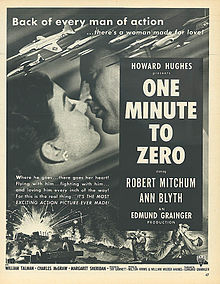Which Way the Trolley: America’s Hot Wars During the Cold War, Part 1
Similarly, President Roosevelt could have done something to stop the fire-bombing of Japanese cities, which created tremendous civilian casualties, more even than the two atomic bombings. Secretary of War Stinson was against the fire bombings, but did not press General Curtis Lemay, commander of the American B-29 fleet, on the issue. Earlier, Roosevelt forbad the use of poison gas in the invasion of the island of Iwo Jima which was garrisoned only by Japanese Army personnel.[24] He did not want to let that monster out again after so much damage had been done by mustard and other gases in World War I. So Roosevelt could have stopped or modified the air campaign against the Japanese. All of this affirms Niebuhr’s insights from the 1930s that even Just Wars will be fought in sin drenched ways and with moral misjudgments.
Korean War
The first hot war was the Korean War (1950-1953). It was called a “police action” by President Truman to avoid a direct “in your face” challenge to Joseph Stalin, and the possibility of triggering a nuclear war with the Soviet Union. Avoiding a war with the Soviet Union was to be one of President Truman’s constant concerns throughout the Korean War and the cause of his famous dispute with General MacArthur. Truman also decided, on the military’s advice, not to use atomic bombs to stop the initial the North Korean attack.[25] Rather, Truman reinforced American units on the Korean peninsula until the attack was repulsed and United Nations troops (80% American) could go on the offensive. Truman’s actions also resulted in an unfortunate precedent of having a full blown war without a formal declaration of war. US Presidents had taken military actions before without war declarations, as in the naval war with France (1799-1801) but never about such a large military confrontation.
The Korean War was fought with assumptions from World War II about the unavoidability of civilian casualties. At the beginning of the war, as American and South Korean forces were retreating from the Communist North Koreans, the latter injected troops into the streams of civilian refugees heading south. They re-assembled and ambushed American units from behind. Soon this resulted in several ugly incidents of American forces shooting into refugee groups to avoid these ambushes and causing many casualties.[26] Leftist groups still make much about these incidents.
 After the first months of the war, the US Air Force achieved total air superiority over Korea. The North Korean and Chinese troops adapted to this by moving only at night, and became expert in camouflage and hiding supplies and troops in towns and villages. The US Air Force responded by making rubble of the said Korean towns and villages. The capital of South Korea, Seoul, was fought over several times and many civilian casualties resulted in this also.
After the first months of the war, the US Air Force achieved total air superiority over Korea. The North Korean and Chinese troops adapted to this by moving only at night, and became expert in camouflage and hiding supplies and troops in towns and villages. The US Air Force responded by making rubble of the said Korean towns and villages. The capital of South Korea, Seoul, was fought over several times and many civilian casualties resulted in this also.
We need not examine the details of the military campaign. But note that after several years of fighting, the truce line was established close to the original line that demarked North and South Korea before the war begun. This division created a “laboratory” in which one could examine what happens when one part of a country is divided into a Communist state with a Communist, centrally controlled economy, and the other follows a free market pattern and is governed democratically.[27]
Category: Church History, Fall 2016


